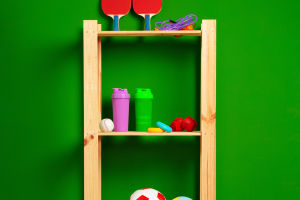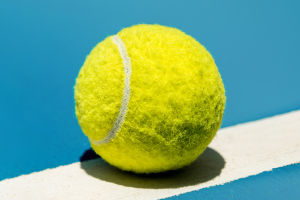How competitive are you? These little guys don't get enough credit for turning an afternoon in the garden into a battle of strategy and skill. Fun fact: croquet isn't just for Victorian tea parties or posh picnics; it's one of the most cutthroat lawn games out there!
Whether you're a casual player or a croquet champ in the making, let's roll into the world of croquet balls – where science, history, and a dash of humor collide!
Rollin' Through History
Believe it or not, croquet balls have been rolling across lawns since the 1850s. The game originated in England, where it quickly became a fashionable pastime. It wasn't long before croquet balls knocked into each other at high-society garden parties. And let's not forget their famous cameo in "Alice in Wonderland," where they doubled as hedgehogs. No actual hedgehogs were harmed in the making of the game.
Since then, croquet has evolved, with the equipment becoming more standardized. Early croquet balls were made of wood, but today, they're crafted from durable, hard plastic or composite materials. This change was made to keep things rolling smoothly – literally – and to withstand the not-so-gentle taps of the modern mallet.
The Anatomy of a Croquet Ball
Here's a fun fact: the balls you use in your backyard croquet set are not quite the same as the ones professionals use in tournaments. Backyard balls are typically lighter and made from composite plastic, while official croquet balls are heavier, measuring about 3 5/8 inches in diameter and weighing a solid pound. Talk about dense – these aren't just your average sports balls.
If you've ever wondered why they're so colorful (you know you have), it's for easy player identification. Traditionally, there are six colors: blue, red, black, yellow, green, and orange. But if you're playing with your friends, it's totally cool to claim the flashiest one and call it your lucky ball. Because, let's face it, having a lucky croquet ball can make or break your game.
Funny Facts About Croquet Balls
Did you know that croquet balls can be so competitive they've been known to crack under pressure? Well, not literally (most of the time), but in the high-stakes world of croquet tournaments, it's been said that players will go to great lengths to outsmart their opponents, including picking the most pristine ball.
And here's an unpopular opinion: croquet might just be the most underrated sport for people with a thirst for strategy. Sure, it looks innocent enough, but under the surface, there's intense planning, aim, and a smidgen of psychological Conflict. Who knew a simple ball game could feel like a lawn chess match?
What's the Deal with Regulations?
For those who think croquet is just a casual lawn game, think again. Serious players follow strict regulations. Tournament croquet balls must meet precise standards, from weight to bounce – yes, they even test the bounce! Apparently, you can't have a ball that bounces too much, as it might mess with the smooth roll necessary for expert shots. Who knew croquet had such rules?
Choosing Your Croquet Ball
So, you're ready to grab a croquet set, huh? Whether you're buying for backyard fun or eyeing a more serious competition, choosing the right croquet balls matters. Standard backyard croquet sets will cost you anywhere from $30 to $80, depending on quality. If you want to level up to professional balls, expect to spend $100 or more. These pricier balls are designed to handle rigorous play and, let's be honest, show off your croquet swagger.
For Lykkers thinking of hosting the ultimate garden party, a well-loved set of croquet balls could be the secret ingredient for an afternoon of laughs (and maybe a few dramatic moments as you send someone else's ball flying across the lawn).
How to Care for Your Balls (Yep, We're Going There)
Croquet balls are tough, but they're not invincible. After repeated use, they can get scuffed, dented, and covered in dirt. To keep them in top shape, give them a good wipe down after each game and store them in a cool, dry place – because nobody likes a soggy croquet ball. If you're feeling fancy, you can even polish them up with some car wax.
Endgame: Why Croquet Balls Matter
At the end of the day, croquet is more than just knocking balls through hoops – it's a game of finesse, skill, and, let's be honest, a little bit of luck. The balls you play with can change the entire feel of the game.
So, Lykkers, next time you grab a mallet and eye that perfect shot, remember that these little balls have rolled through history, turning garden pastimes into serious sports.
Croquet may not be the flashiest of sports, but its humble balls keep the game rolling – in more ways than one.


